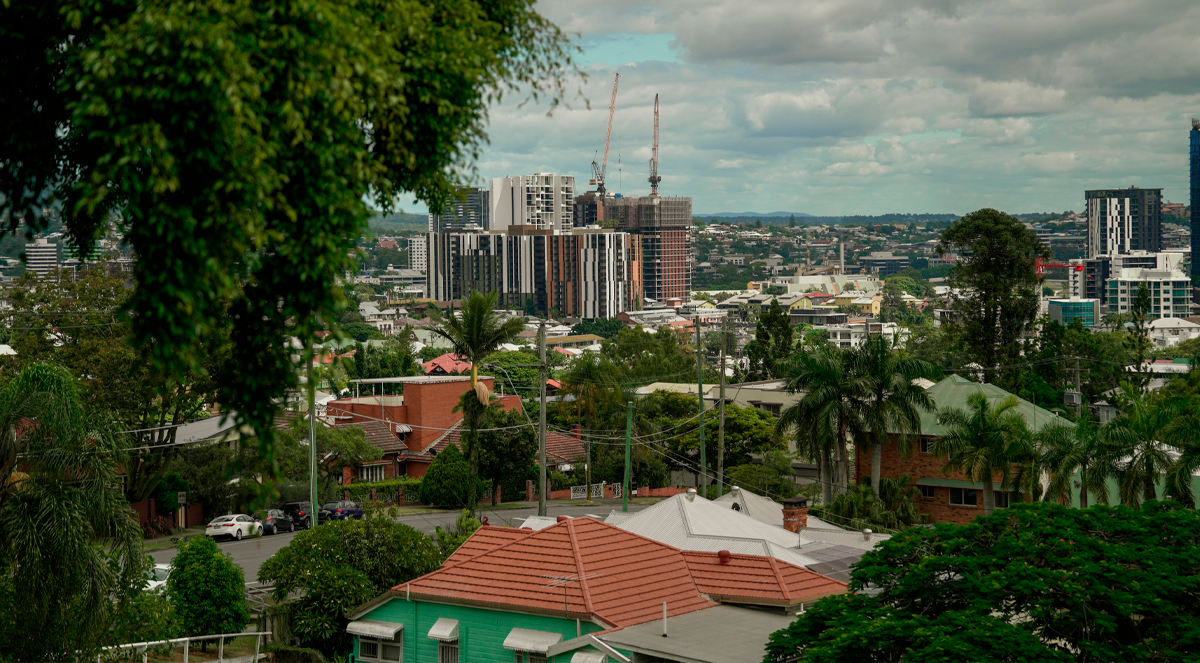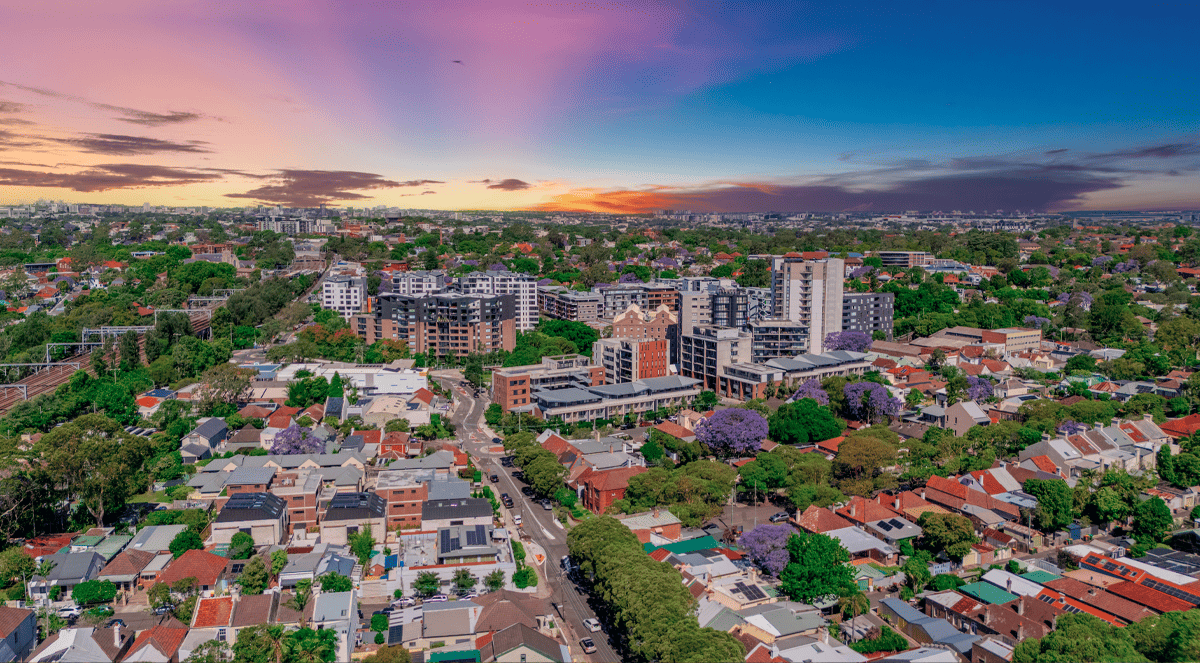Features > Property News & Insights > Market updates
Alarm sounded over rental property shortage and housing supply
.png)
Image by Stefan Postles
KEY POINTS
- The Real Estate Institute of Australia says a decline in new property loans to investors in the last 3 months of 2024 is cause for concern
- REIA says a continued drop in investment in residential property will drive up rents and exacerbate affordability challenges for tenants
- High interest rates, expensive construction costs, and financial barriers are delaying new high-density housing projects, slowing supply at a time of crisis
Australia’s peak real estate organisation says it’s worried about the future supply of properties for rent in Australia.
The Real Estate Institute of Australia (REIA) says a recent decline in new investment in residential properties is concerning for housing availability.
The concerns come as the outgoing head of economic research at Australia’s largest listings and property media company has launched a staunch defence of developers, saying they are being unfairly blamed for the poor supply of new high-density housing in Australia.
Investor loans trend lower
The President of the Real Estate Institute of Australia, Leanne Pilkington, says she’s concerned about new data from the Australian Bureau of Statistics which shows the number of investment loans for dwellings fell 4.5% between the September and December quarters of 2024.
The value of new investor loans also fell 2.9% between the two quarters to $32.4 billion.
It’s the first decline in the number and value of investor loans since early 2023.
Ms Pilkington says the figures highlight “a growing imbalance in the market”, as investors play a crucial role in maintaining rental supply, and this decline in new investment loans is a worrying trend.
"With vacancy rates already at record lows in many parts of the country, a continued drop in investment will further strain the rental market, driving up rents and exacerbating affordability challenges for tenants.”
The REIA President says that, with investor lending now trending downward, governments need to intervene to encourage more investment in residential property.
"Policymakers need to address the barriers discouraging investors, such as rising costs, tax settings, and regulatory uncertainty," she says.
"A balanced housing market requires a steady flow of investment to ensure adequate rental supply and affordability for all Australians.
"Without sufficient investor participation, we risk further undersupply in the rental market, making housing affordability an even greater challenge."
Ms Pilkington says she welcomes public assurances by Anthony Albanese’s Federal Labor government that if re-elected this year, it will not make changes to the negative gearing tax regime for property investment.
While new investor loans were down in the December quarter of 2024, it’s worth noting that they remained 13.2% higher than loans written in the same quarter the previous year.
The latest ABS figures also showed a 2.2% lift in new loans taken out by owner-occupiers in the December quarter of 2024, including more loans to first-home buyers.
“The good news is there was an increase in first-home buyers with loan commitments rising 1.3% in number and 1.5% in value, reflecting ongoing government incentives and support schemes,” REIA President Leanne Pilkington says.
“While the total number of new loan commitments for dwellings fell 0.4% in the quarter, the value of loans increased by 1.4%, suggesting that buyers are borrowing more despite higher interest rates.
"The increase in first-home buyer activity is encouraging, but it does not offset the broader issue of supply constraints."
Housing supply
Housing supply is top of mind for people like Cameron Kusher.
Mr Kusher is the outgoing Executive Manager of Economic Research at REA Group - the company behind Australia’s biggest property search website - realestate.com.au, the PropTrack data analysis business and broker Mortgage Choice.
He’s weighed into a heated debate on housing supply, which has seen developers blamed for “land-banking” and postponing or even abandoning large housing projects in the inner city and middle ring suburbs, where governments say they want to see plenty of “in-fill” development to ease the housing squeeze.
“The mainstream media constantly bemoans the fact that we aren’t building enough homes, but it’s infuriating that they rarely go into why that is the case.” Cameron Kusher says.
The Reserve Bank may have cut interest rates this week, but a cash rate of 4.1% is still relatively high in historical terms.
“Higher interest rates mean higher interest costs for buyers and reduced borrowing capacities for developers.
“It means finance is more difficult to access and much more expensive.
“Construction costs have surged, and while the growth has slowed, those prices aren’t going back down,” Cameron Kusher says.
“So, the premium for a new home over an existing one is large.
“As a result, many people are preferring to buy existing homes which are much cheaper.”
Mr Kusher says the overwhelming bulk of housing in Australia is built by the private sector.
Therefore, he says, “It only gets built when there are enough pre-sales to access construction finance.
“The high relative cost of new (homes) and high interest rates make pre-sales targets much harder to achieve.”
Directly addressing the issue of “land-banking” of prime sites in Australian cities, Mr Kusher says it's worth remembering that developers need to make a profit.
“Most developers aren’t in a financially bad enough state to sell the site, so the projects are just on pause,” he says.
“When interest rates come down and market conditions improve, those sites will be built, but until then, many of these projects are on pause.”
“There is no impetus or requirement to build them at this stage of the cycle,” the economic analyst says.
“This is what the media should be explaining and talking about; how we reduce the cost of bringing new housing to the market.”
Stay Up to Date
with the Latest Australian Property News, Insights & Education.




.png?width=292&height=292&name=Copy%20Link%20(1).png)
 SIGN UP FOR FREE NEWSLETTER
SIGN UP FOR FREE NEWSLETTER





.jpg?width=1920&height=1080&name=Warning%2c%20You%20Might%20Be%20Facing%20Higher%20Taxes%20Soon%20(1).jpg)





.png?width=1920&height=1080&name=Rate%20Drops%20Signal%20BIGGEST%20Property%20Boom%20in%20DECADES%20(1).png)

.jpg?width=1920&height=1080&name=Labor%20vs%20Liberal%20These%20Housing%20Policies%20Could%20Change%20the%20Property%20Market%20Forever%20(1).jpg)
.jpg?width=1920&height=1080&name=QLD%20Slashes%20Stamp%20Duty%20Big%20News%20for%20Investors%20%26%20Home%20Buyers%20(1).jpg)
.jpg?width=1920&height=1080&name=Trump%20Just%20Slapped%20Tariffs%20%E2%80%93%20Here%E2%80%99s%20What%20It%20Means%20for%20Australia%20(1).jpg)
.jpg?width=1920&height=1080&name=Federal%20Budget%202025%20More%20Debt%2c%20No%20Housing%20%E2%80%93%20Here%E2%80%99s%20What%20You%20Need%20to%20Know%20(1).jpg)
.jpg?width=1920&height=1080&name=Australias%20Housing%20Crisis%20is%20about%20to%20get%20MUCH%20Worse%20(New%20Data%20Warns).jpg)
%20(1).jpg?width=1920&height=1080&name=Australias%20RENTAL%20CRISIS%20Hits%20ROCK%20BOTTOM!%20(2025%20Update)%20(1).jpg)
%20(1).png?width=1920&height=1080&name=Is%20Adelaide%20Still%20a%20Good%20Property%20Investment%20(2025%20UPDATE)%20(1).png)
.jpg?width=1920&height=1080&name=RBA%20Shocks%20with%20Rate%20Cuts!%20What%E2%80%99s%20Next%20for%20Property%20Investors%20(1).jpg)
%20(1).jpg?width=1920&height=1080&name=I%20Predict%20The%20Feb%20Rate%20Cut%20(My%20Price%20Growth%20Prediction)%20(1).jpg)
.png?width=1920&height=1080&name=Why%20Property%20Prices%20Will%20Rise%20in%202025%20Market%20Predictions%20(1).png)
.jpg?width=1920&height=1080&name=Why%20Investors%20Are%20Choosing%20Apartments%20Over%20Houses%202%20(1).jpg)
.jpg?width=1920&height=1080&name=Why%20Rate%20Cuts%20Will%20Trigger%20A%20Property%20Boom%20(1).jpg)
.jpg?width=1920&height=1080&name=Retire%20On%202Million%20With%20One%20Property%20(Using%20SMSF).jpg)
.jpg?width=1920&height=1080&name=4%20Reasons%20Why%20You%20Should%20Invest%20in%20Melbourne%20Now%20(1).jpg)
%20(1).jpg?width=1920&height=1080&name=Old%20Property%20vs%20New%20Property%20(Facts%20and%20Figures%20Revealed)%20(1).jpg)
%20(1).jpg?width=1920&height=1080&name=Will%20The%20New%20QLD%20Govt%20Create%20a%20Property%20Boom%20or%20Bust%20(My%20Prediction)%20(1).jpg)
%20Scott%20Kuru%20(1).jpg?width=1920&height=1080&name=Inflation%20Hits%20Three-Year%20Low%20(Will%20RBA%20Cut%20Rates%20Soon)%20Scott%20Kuru%20(1).jpg)
.jpg?width=1920&height=1080&name=How%20to%20Buy%20Investment%20Property%20Through%20SMSF_%20The%20Ultimate%20Guide%20(1).jpg)
.jpg?width=1920&height=1080&name=Victoria%20Slashes%20Stamp%20Duty%20Melbourne%20Set%20to%20Boom%20Scott%20Kuru%20(1).jpg)
.png?width=1571&height=861&name=Are%20Foreign%20Buyers%20Really%20Driving%20Up%20Australian%20Property%20Prices%20(1).png)
.jpg?width=1920&height=1080&name=The%20Single%20Factor%20That%20Predicts%20Property%20Growth%20Regions%20(1).jpg)
%20Scott%20Kuru%20(1).jpg?width=1920&height=1080&name=My%20Prediction%20On%20Rates%20%26%20Negative%20Gearing%20(Market%20Crash)%20Scott%20Kuru%20(1).jpg)

-1.png?width=1920&height=1080&name=Major%20Banks%20Cut%20Rates%20Will%20RBA%20Follow%20Suit%20(Sept%20Rate%20Update)-1.png)
%20Scott%20Kuru-1.png?width=1920&height=1080&name=Rate%20Cut%20Coming%20What%20New%20Zealands%20Move%20Means%20for%20Australia%20(Sept%20Prediction)%20Scott%20Kuru-1.png)
%20(1).jpg?width=1920&height=1080&name=Buy%20when%20the%20interest%20rates%20are%20high!%20(Why%20you%20must%20buy%20now!)%20(1).jpg)
.jpg?width=1920&height=1080&name=Carms_Revised%20Taxes%20Due%20Aug%209%20YT%20Thumbnail02%20(1).jpg)
.jpg?width=1920&height=1080&name=Carms_Too%20Little%20Too%20Late%20Aug%207%20YT%20Thumbnail01%20(1).jpg)









.jpg?width=1920&height=1080&name=Carms_Rate%20Drop%20In%20July%20Jun%2010%20YT%20Thumbnail02%20(1).jpg)
.jpg?width=1920&height=1080&name=Carms_Own%20a%20Property%20V6%20Jun%205_YT%20Thumbnail%20(1).jpg)









.png?width=1920&height=1080&name=Artboard%201%20(3).png)






.jpg?width=1920&height=1080&name=YT%20thumbnail%20%20(1).jpg)

